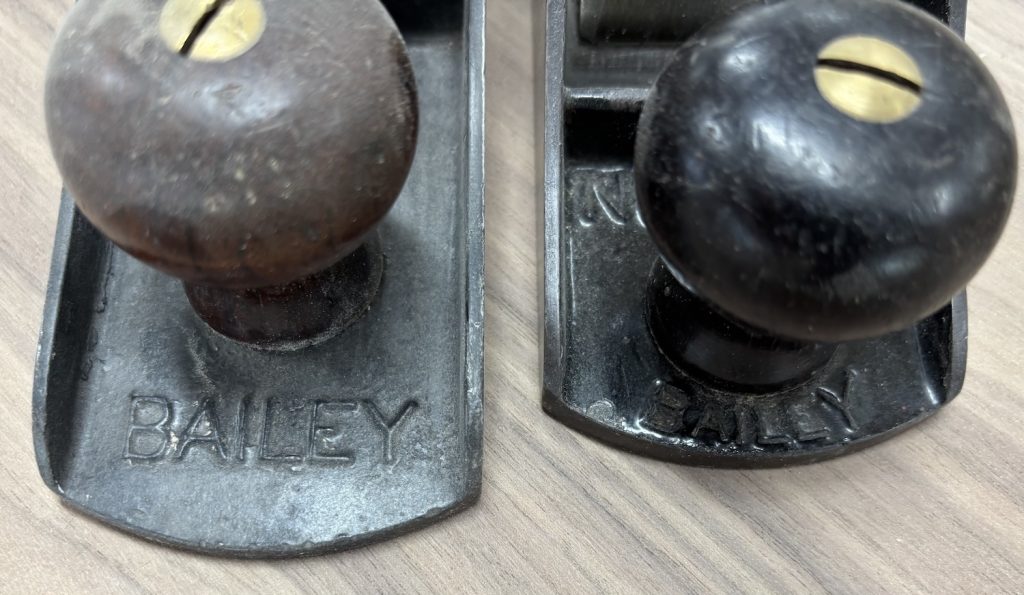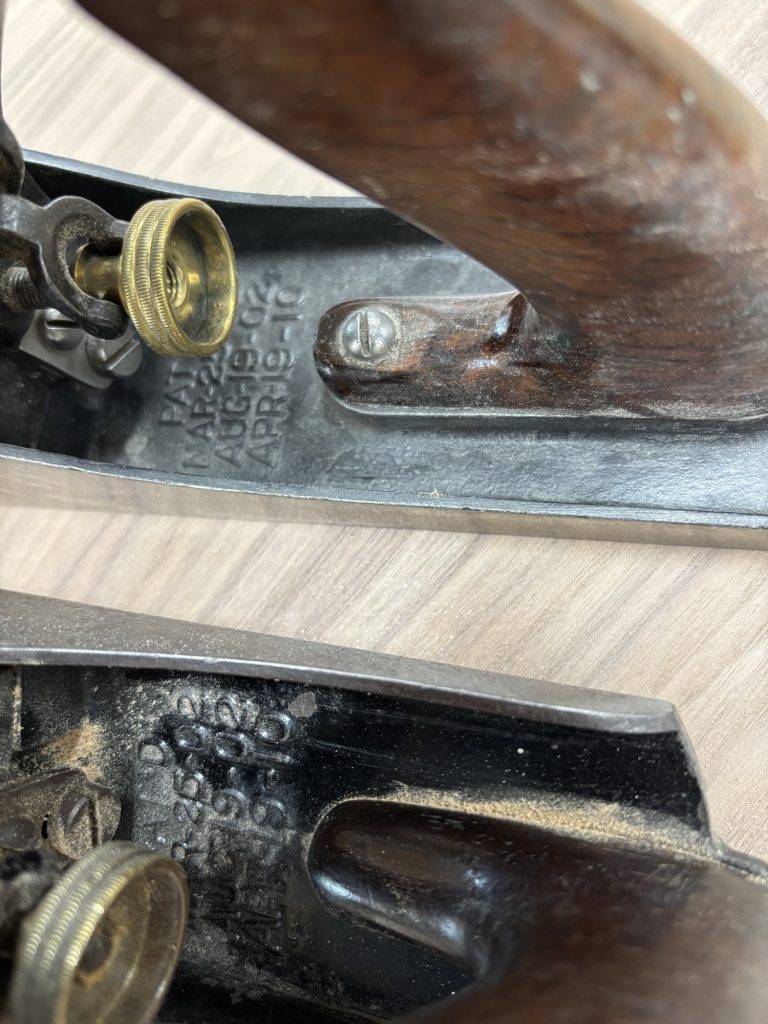Facts About Old Planes
There’s so much information on the internet, as well as written sources on Stanley planes, it would be silly for me to try to write up a lengthy blog on Stanley planes. Instead, I’ll just point out a few interesting facts, and if you really want to dig into it, I’ll provide a list of some of the best sources for further research.
Stanley Planes has its origin in 1843 when Frederick T. Stanley founded The Stanley Works. Located in New Britain, Connecticut, his company manufactured hinges, bolts, and other door hardware. As time went on, there was the merging of some businesses and the takeover of others, but by the late 1860s, metal planes became popular, and Stanley managed to corner the market. Leonard Bailey was the greatest contributor to Stanley’s success. His 1867 patents for plane improvements contributed to the beginning of what we know of today as Stanley-type planes. There are different styles of Stanley planes, but Bailey is by far the most common. Another style is the Bedrock, and I find the origin of the Bedrock a bit confusing. In some references, I’ve seen it listed as one of Leonard Bailey’s patents; in other sources, the patents are listed under other names. The differences between it and the Bailey seem to be pretty minimal, with most having to do with the frog and the way it mates with the bottom casting. Most references to the Bedrock indicate it is a slightly better style, but I’ve never compared the two. Currently, Lie-Nielsen owns the patent and makes very high-quality and expensive Bedrock-style planes. More information on the Bedrock can be found in the references below.
For this blog, I’ll stick with the Bailey. The number system put in place by Stanley for their Bailey bench planes is still common today. Stanley used a numbering system 1 – 8, with each number’s sole being slightly larger than the subsequent number. The size of the sole determines the plane’s primary purpose. Numbers 1-4 are considered smoothing planes for preparing wood for finishing. The 4 appears to be the most popular, with the 3 as a close second. Numbers 5 & 6 are considered to be jack planes for rough smoothing. The jointer planes, the 7 & 8, are relatively long planes used for flattening or for preparing an edge for jointing.
In addition to the number system that represents the function or purpose of the plane, seen above, there’s also a type associated with each plane. The types are 1 – 20, and they represent the timeframe when the tool was produced. Each type has a few different characteristics; some are very minor. Additionally, some types are assessed to be better than others. Below are the dates for each type:
- Stanley Type 1 Handplanes: 1867-1869
- Stanley Type 2 Handplanes: 1869-1872
- Stanley Type 3 Handplanes: 1872-1873
- Stanley Type 4 Handplanes: 1874-1884
- Stanley Type 5 Handplanes: 1885-1888
- Stanley Type 6 Handplanes: 1888-1892
- Stanley Type 7 Handplanes: 1893-1899
- Stanley Type 8 Handplanes: 1899-1902
- Stanley Type 9 Handplanes: 1902-1907
- Stanley Type 10 Handplanes: 1907-1909
- Stanley Type 11 Handplanes: 1910-1918
- Stanley Type 12 Handplanes: 1919-1924
- Stanley Type 13 Handplanes: 1925-1928
- Stanley Type 14 Handplanes: 1929-1930
- Stanley Type 15 Handplanes: 1931-1932
- Stanley Type 16 Handplanes: 1933-1941
- Stanley Type 17 Handplanes: 1942-1945
- Stanley Type 18 Handplanes: 1946-1947
- Stanley Type 19 Handplanes: 1948-1961
- Stanley Type 20 Handplanes: 1962-1967
I’ll close this lengthy blog with a couple of significant references. First of all, the quickest and easiest access source is a website built by Patrick Leach called The Superior Works: Patrick’s Blood and Gore, Beginning of the Saga located at http://www.supertool.com/StanleyBG/stan0a.html. Unfortunately, some of the best references are books that are out of print and, because of that, are quite pricey. The first is called Stanley Plane by Alvin Sellens. The second is Antique and Collectible Stanley Tools, A Guide to Identity and Value by John Walter.


